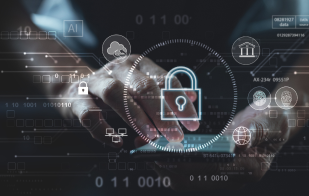Why Organisations Should Prioritise Quantum Resilience
For decades, encryption has been the backbone of cybersecurity, protecting sensitive data, financial transactions, and national security interests. However, with the rapid advancement of quantum computing, the very encryption methods that safeguard today’s digital world are at risk of becoming obsolete. The transition to quantum-safe cryptography is not just an upgrade—it’s a necessity to ensure long-term security in a post-quantum era.
While quantum-safe encryption is crucial, it’s only part of the story. Organisations should also focus on building quantum resilience—a proactive approach that goes beyond just protecting against quantum threats and extends to ensuring that their systems can withstand quantum-related disruptions and continue functioning smoothly.
In a rapidly changing digital landscape, resilience has become one of the most important pillars of cybersecurity. With major quantum advancements accelerating in 2024—including NIST’s finalisation of post-quantum cryptographic (PQC) standards and successful demonstrations of quantum attacks on small-scale encryption—the urgency to act has never been greater. Resilience isn’t just about preventing attacks or breaches; it’s about ensuring that if something does go wrong—whether it's a cyberattack, system failure, or quantum disruption—your business can quickly adapt and recover with minimal impact. As quantum computing advances, organisations that focus only on prevention may find themselves blindsided by unforeseen quantum-related vulnerabilities. The risk isn’t just hypothetical—nation-states and threat actors are already preparing for a post-quantum world, and organisations that don’t adapt could face serious consequences.
Quantum resilience isn’t just about surviving a potential attack; it’s about thriving in a future where quantum computing plays a central role in both opportunities and risks. Beyond mitigating threats, organisations that invest in quantum resilience early will have the strategic advantage of leveraging quantum innovations for secure communications, artificial intelligence, and more.
Beyond Encryption: What Quantum Resilience Requires
Building quantum resilience requires an understanding of both the technology and its potential impact on your organisation. This means more than just adopting quantum-safe encryption; it also involves building a cybersecurity infrastructure that can quickly adapt to quantum challenges. A core aspect of this is developing crypto-agility—the ability to swiftly transition between encryption methods as new quantum-safe standards emerge.
This includes implementing scalable, flexible systems that can be updated in real-time as quantum technologies advance. Hybrid cryptographic models, which combine traditional and quantum-resistant encryption, are already being explored as a transitional approach to strengthen security during this shift.
Additionally, quantum resilience involves creating robust recovery processes that ensure your organisation can bounce back quickly from disruptions, whether those disruptions are quantum-related or caused by other technological or cyber threats. Embedding quantum-specific threat models into existing cybersecurity frameworks will be crucial in detecting and responding to quantum-powered cyberattacks before they escalate.
Beyond technical measures, organisations must also focus on awareness and workforce readiness. Security teams need to be trained in quantum-related risks, regulatory requirements, and mitigation strategies to ensure that businesses remain compliant and resilient. Many organisations underestimate the complexity of transitioning to post-quantum security—proactive education and planning will be key to making this shift seamless.
By planning for resilience, businesses can ensure they are not only prepared for quantum attacks but are also equipped to handle the ongoing technological shifts in the coming decades. With regulatory bodies such as NIST, the EU, and the U.S. government setting deadlines for quantum-safe cryptography adoption, organisations that act now will avoid compliance risks and rushed transitions in the future.
Key Takeaway for Quantum resilience
Quantum resilience is about more than just defence—it’s about ensuring your organisation can adapt and recover from quantum-related disruptions. By prioritising scalable encryption strategies, crypto-agility, and quantum-ready response frameworks, organisations can safeguard their data and operations in an evolving quantum-powered world.
As the quantum era rapidly approaches, organisations must proactively strengthen their cybersecurity strategies to ensure long-term resilience. Help AG, through its Cybersphere Nexus, is leading the way in post-quantum cybersecurity, providing tailored solutions to help businesses and government entities transition to quantum-safe encryption and resilient security architectures.

Get in touch
If you’d like to learn more or schedule a meeting with our experts, feel free to contact us today. Let’s work together to secure your organization for the post-quantum future.
Discover our Cybersecurity solutions
Dive deeper into how to secure the future of business with these resources
Let's work together
Embrace change as our digital transformation industry experts & innovation across Cloud & Edge help you build a better tomorrow.


